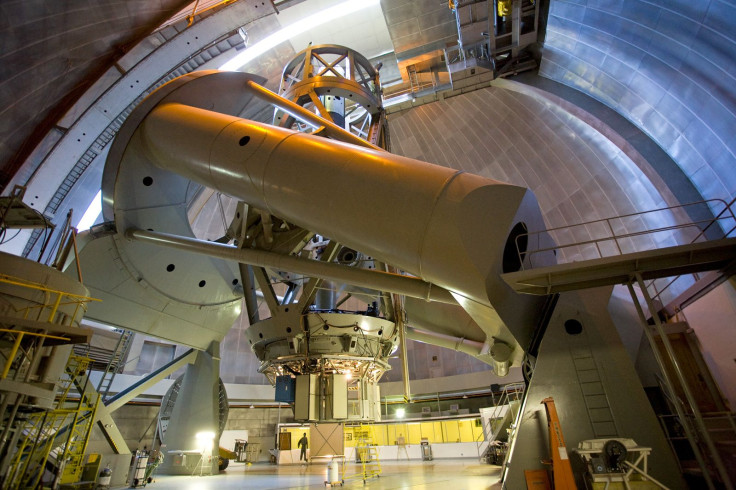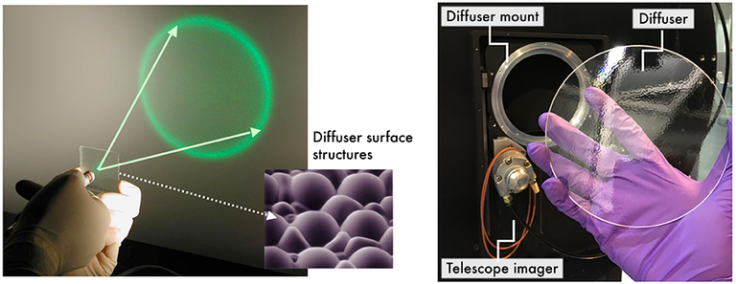New Telescope Attachment Allows Earth-Based Observations Of Exoplanets With Space-Based Clarity

When it comes to astronomy in general, and observation of planets beyond our solar system in particular, space-based telescopes have a large advantage over their ground-based counterparts, due to the atmosphere that surrounds Earth. This layer of mostly gas (and some dust) scatters, reflects or absorbs a lot of the light that hits it from the outside, reducing the intensity of the light input received by telescopes on the planet’s surface.
A team of astronomers, led by researchers from the Pennsylvania State University, have found a way to bring Earth-based telescope observations almost at par with those made using telescopes that orbit Earth. They have devised an attachment for ground telescopes that will “produce measurements of light intensity that rival the highest quality photometric observations from space,” they said in a statement Thursday.
The “low-cost” attachment is called a beam-shaping diffuser and looks like a small disc of glass. But it’s no ordinary glass; the diffusers are “carefully structured micro-optic devices that spread incoming light across an image — that are capable of minimizing distortions from the Earth’s atmosphere that can reduce the precision of ground-based observations,” the statement said.


One of the important things the new attachment will allow ground telescopes to do is to study exoplanets as they move across the faces of their respective stars. Currently, focused telescopes produce images that vary in size and intensity. The other conventional method — intentional defocusing to spread out the light — produces better photometric precision, but size and intensity continue to fluctuate.
“This inexpensive technology delivers high photometric precision in observations of exoplanets as they transit — cross in front of — the bright stars that they orbit. This technology is especially relevant considering the impending launch of NASA’s Transiting Exoplanet Survey Satellite early in 2018. It is up to ground-based facilities to rapidly and reliably follow-up on candidate planets that are identified by TESS,” Gudmundur Stefansson, a graduate student at Penn State and lead author of a paper on the subject, elaborated in the statement.
For the nanofabrication process to create the diffusers, the astronomers partnered with RPC Photonics in Rochester, New York.
Suvrath Mahadevan, associate professor of astronomy and astrophysics at Penn State and an author of the paper, explained the process briefly: “A carefully designed surface pattern is precisely written on a plastic polymer on a glass surface or directly etched on the glass itself. The pattern consists of precise micro-scale structures, engineered to mold the varying light input from stars into a predefined broad and stable output shape spread over many pixels on the telescope camera.”
The diffusers were tested on three telescopes — the Hale telescope at Palomar Observatory in California, the 0.6m telescope at Davey Lab Observatory at Penn State, and the ARC 3.5m Telescope at Apache Point Observatory in New Mexico. The diffused images were found to be more consistent and stable than focused or defocused images, in terms of size, shape, and intensity.
Diffusers also work beyond optical wavelengths, allowing for their application in a wide range of the study of exoplanets. “We can use them to precisely measure the times exoplanetary worlds transit their stars, which will help us measure their masses and compositions, and even find new planets in their systems; and we can use them to study the temperature structures of giant planets' atmospheres,” Jason Wright, associate professor of astronomy and astrophysics at Penn State and an author of the paper, said in the statement.
Titled “Toward Space-like Photometric Precision from the Ground with Beam-shaping Diffusers,” the paper was published online Thursday in the Astrophysical Journal.
© Copyright IBTimes 2024. All rights reserved.





















